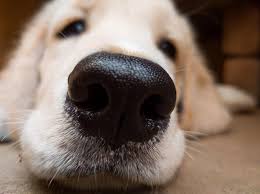How do you treat reverse sneezing in dogs? What Should I Do If My Dog Reverse Sneezes? A common remedy is to hold the dog’s nostrils closed for a second and lightly massage its throat to calm him. Lightly blowing in his face may also help. This should cause the dog to swallow a couple of times, which will usually stop the spasm of the reverse sneeze.
When should I worry about reverse sneezing? When To Come In. While the occasional reverse sneeze is usually nothing to worry about, if it increases in frequency or becomes worse, it’s best to have your pet seen by your veterinarian. If not properly addressed, some respiratory illnesses can be contagious to other pets, become chronic or even be life-threatening.
Is reverse sneezing bad for dogs? Although it can be alarming to witness a dog having a reverse sneezing episode, it is not a harmful condition and there are no ill effects. The dog is completely normal before and after the episode. During a reverse sneeze, the dog will make rapid and long inspirations, stand still, and extend his head and neck.
Why is my dog backwards sneezing? Formally called paroxysmal respiration, reverse sneezing occurs when the dog rapidly inhales air, rather than rapidly exhaling air as they do with a normal sneeze. “This normally occurs in response to an irritation in the nose or throat that causes a spasm.
How do you treat reverse sneezing in dogs? – Additional Questions
How do I know if my dog has nasal mites?
The most common signs associated with nasal mite infestation include bleeding from the nose, sneezing, “reverse sneezing” (sniffing air rapidly inward), impaired ability to pick up scents, facial itching, nasal discharge, labored breathing, head shaking, and high-pitched, noisy breathing.
Is reverse sneezing a symptom of kennel cough?
What are the Symptoms of Kennel Cough? Signs of kennel cough include a dry cough or a “reverse sneeze.” A reverse sneeze sounds like a sniffling cough through the nose and signifies post-nasal drip or a tickle in the throat. Your dog may seem lethargic and have low energy or he may otherwise appear normal.
Should I take my dog to the vet for reverse sneezing?
Most of the time, no medical treatment is required for reverse sneezing. You may gently pet your dog’s neck or body to calm her during an episode. You can also try a home remedy of covering both nostrils for a few seconds and lightly blowing on your dog’s nose.
How can you tell the difference between a reverse sneeze and a collapsed trachea?
If your dog has a collapsing trachea, they will make a honking sound when they cough — this is not to be confused with the snorting sound of a reverse sneeze. Dogs that are reverse sneezing sound like they’re sneezing and inhaling at the same time.
Can I give my dog Benadryl for reverse sneezing?
Don’t Give Benadryl For Reverse Sneezing
Benadryl will usually stop a reverse sneezing attack. But it just suppresses the symptom. It doesn’t cure the underlying cause of your dog’s reverse sneezing. Benadryl is easy to overdose and can cause serious side effects in your dog.
Can dog Food allergies cause reverse sneezing?
Causes of Reverse Sneezing in Dogs
The type of irritations that can lead to an episode of reverse sneezing include: Allergies. Eating or drinking too fast.
